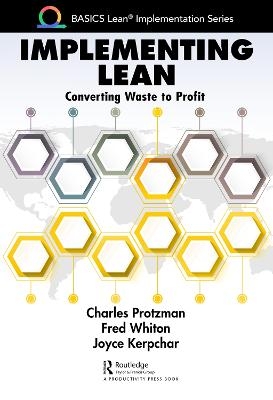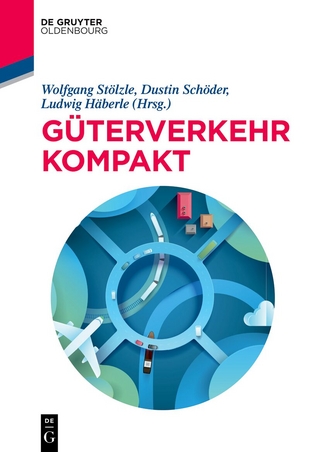
Implementing Lean
Converting Waste to Profit
Seiten
2022
Productivity Press (Verlag)
978-1-032-02917-7 (ISBN)
Productivity Press (Verlag)
978-1-032-02917-7 (ISBN)
Each book is chocked full of case studies and stories from the authors’ own experiences in training organizations who have started or are continuing their Lean journey of continuous improvement. Contents include valuable lessons learned and each chapter concludes with questions pertaining to focus of the chapter.
Lean is about building and improving stable and predictable systems and processes to deliver to customers high-quality products/services on time by engaging everyone in the organization. Combined with this, organizations need to create an environment of respect for people and continuous learning. It’s all about people. People create the product or service, drive innovation, and create systems and processes, and with leadership buy-in and accountability to ensure sustainment with this philosophy, employees will be committed to the organization as they learn and grow personally and professionally.
Lean is a term that describes a way of thinking about and managing companies as an enterprise. Becoming Lean requires the following: the continual pursuit to identify and eliminate waste; the establishment of efficient flow of both information and process; and an unwavering top-level commitment. The concept of continuous improvement applies to any process in any industry.
Based on the contents of The Lean Practitioners Field Book, the purpose of this series is to show, in detail, how any process can be improved utilizing a combination of tasks and people tools and introduces the BASICS Lean® concept. The books are designed for all levels of Lean practitioners and introduces proven tools for analysis and implementation that go beyond the traditional point kaizen event. Each book can be used as a stand-alone volume or used in combination with other titles based on specific needs.
Each book is chock-full of case studies and stories from the authors’ own experiences in training organizations that have started or are continuing their Lean journey of continuous improvement. Contents include valuable lessons learned and each chapter concludes with questions pertaining to the focus of the chapter. Numerous photographs enrich and illustrate specific tools used in Lean methodology.
Implementing Lean: Converting Waste to Profit explores implementation methods, line balancing methods, including baton zone or bumping, and implementing Lean in the office and machine shops. The goal of this book is to introduce the balance of the tools and how to proceed once the analysis is completed. There are many pieces to a Lean implementation and all of them are interconnected. This book walks through the relationships and how the data presented can be leveraged to prepare for the implementation. It also provides suggest solutions for improvements and making recommendations to management to secure their buy-in and approval.
Lean is about building and improving stable and predictable systems and processes to deliver to customers high-quality products/services on time by engaging everyone in the organization. Combined with this, organizations need to create an environment of respect for people and continuous learning. It’s all about people. People create the product or service, drive innovation, and create systems and processes, and with leadership buy-in and accountability to ensure sustainment with this philosophy, employees will be committed to the organization as they learn and grow personally and professionally.
Lean is a term that describes a way of thinking about and managing companies as an enterprise. Becoming Lean requires the following: the continual pursuit to identify and eliminate waste; the establishment of efficient flow of both information and process; and an unwavering top-level commitment. The concept of continuous improvement applies to any process in any industry.
Based on the contents of The Lean Practitioners Field Book, the purpose of this series is to show, in detail, how any process can be improved utilizing a combination of tasks and people tools and introduces the BASICS Lean® concept. The books are designed for all levels of Lean practitioners and introduces proven tools for analysis and implementation that go beyond the traditional point kaizen event. Each book can be used as a stand-alone volume or used in combination with other titles based on specific needs.
Each book is chock-full of case studies and stories from the authors’ own experiences in training organizations that have started or are continuing their Lean journey of continuous improvement. Contents include valuable lessons learned and each chapter concludes with questions pertaining to the focus of the chapter. Numerous photographs enrich and illustrate specific tools used in Lean methodology.
Implementing Lean: Converting Waste to Profit explores implementation methods, line balancing methods, including baton zone or bumping, and implementing Lean in the office and machine shops. The goal of this book is to introduce the balance of the tools and how to proceed once the analysis is completed. There are many pieces to a Lean implementation and all of them are interconnected. This book walks through the relationships and how the data presented can be leveraged to prepare for the implementation. It also provides suggest solutions for improvements and making recommendations to management to secure their buy-in and approval.
Charles Protzman
Chapter 1 – Implementation Methodologies Chapter 2 – Kanban Chapter 3 – Line Balancing Chapter 4 – Lean and Machine Shops Chapter 5 – Lean Applied to Transactional Settings Appendix A – Chapter Answers Appendix B – Acronyms Appendix C – Glossary
| Erscheinungsdatum | 19.12.2022 |
|---|---|
| Reihe/Serie | BASICS Lean® Implementation |
| Zusatzinfo | 109 Line drawings, black and white; 109 Illustrations, black and white |
| Verlagsort | London |
| Sprache | englisch |
| Maße | 178 x 254 mm |
| Gewicht | 530 g |
| Themenwelt | Technik ► Umwelttechnik / Biotechnologie |
| Wirtschaft ► Betriebswirtschaft / Management ► Logistik / Produktion | |
| Wirtschaft ► Volkswirtschaftslehre | |
| ISBN-10 | 1-032-02917-X / 103202917X |
| ISBN-13 | 978-1-032-02917-7 / 9781032029177 |
| Zustand | Neuware |
| Haben Sie eine Frage zum Produkt? |
Mehr entdecken
aus dem Bereich
aus dem Bereich
Grundlagen - Spezialthemen - Übungen
Buch | Softcover (2022)
Springer Gabler (Verlag)
39,99 €


